-
 bitcoin
bitcoin $114320.977035 USD
-0.40% -
 ethereum
ethereum $4152.439985 USD
-1.75% -
 tether
tether $1.000111 USD
-0.04% -
 xrp
xrp $2.843037 USD
-1.63% -
 bnb
bnb $1013.349380 USD
-1.62% -
 solana
solana $208.362767 USD
-2.10% -
 usd-coin
usd-coin $0.999783 USD
0.00% -
 dogecoin
dogecoin $0.232559 USD
-1.00% -
 tron
tron $0.333491 USD
-1.09% -
 cardano
cardano $0.806310 USD
0.19% -
 hyperliquid
hyperliquid $45.023720 USD
-1.59% -
 ethena-usde
ethena-usde $1.000819 USD
-0.06% -
 chainlink
chainlink $21.241249 USD
-2.11% -
 avalanche
avalanche $30.035416 USD
-0.66% -
 stellar
stellar $0.364984 USD
-2.05%
How do I send cryptocurrency to a Trezor wallet address?
Always verify the receive address on your Trezor’s screen to prevent theft—never trust addresses shown only on your computer or phone.
Sep 28, 2025 at 10:00 pm

Understanding Trezor Wallet Addresses
1. A Trezor wallet generates unique cryptocurrency addresses for each transaction to enhance security and privacy. These addresses are derived from your device’s seed phrase and correspond to specific blockchains like Bitcoin, Ethereum, or Litecoin. Before sending funds, ensure you have the correct public address displayed directly on your Trezor device screen.
2. To access an address, connect your Trezor hardware wallet to a computer or mobile device using its USB cable. Open the official Trezor Suite application or a compatible third-party wallet interface such as MetaMask (for Ethereum-based tokens) linked to your Trezor.
3. Navigate to the 'Receive' section within the software. Select the cryptocurrency you intend to receive. The application will prompt your Trezor device to confirm the action. Physically verify the address shown on your Trezor’s display matches the one in the software to prevent man-in-the-middle attacks.
4. Copy the verified address carefully or use the QR code option if available. Never trust addresses displayed solely on your computer screen without cross-checking them on the Trezor device itself. This step is critical in protecting against malware that could alter clipboard data or spoof addresses.
Initiating the Cryptocurrency Transfer
1. Access the wallet or exchange platform where your cryptocurrency is currently held. Locate the 'Send' or 'Withdraw' function. Paste the Trezor-generated address into the recipient field. Avoid manual typing to reduce the risk of typographical errors.
2. Enter the amount of cryptocurrency you wish to transfer. Double-check both the amount and the network type—sending ERC-20 tokens via the Ethereum network, for example, requires selecting ETH as the withdrawal network, not BSC or Polygon.
Always perform a small test transaction first when sending to a new address. This minimizes potential losses in case of incorrect configuration or network mismatch.3. Confirm the transaction details including fees. Some platforms allow fee customization; lower fees may delay confirmation but are suitable for non-urgent transfers. Review all information before authorizing the send request through your source wallet or exchange account.
4. After submission, monitor the blockchain explorer using the transaction ID (TXID). Most transactions appear within minutes, though congestion can cause delays. Your Trezor-linked wallet interface will reflect the incoming balance once confirmed by the network.
Security Practices During Fund Transfers
1. Ensure your Trezor device is updated to the latest firmware version. Outdated firmware may lack support for certain token standards or contain vulnerabilities exploitable during transactions.
2. Use only official websites and verified applications when interacting with your Trezor. Phishing sites mimic legitimate services to steal credentials or redirect funds. Bookmark trezor.io and avoid clicking links from emails or social media.
Never share your 12- or 24-word recovery phrase with anyone, and never enter it on any website or software outside the initial setup of your Trezor device.3. Disable unnecessary permissions on connected devices. If using a mobile phone, restrict app access to microphone, camera, and storage unless explicitly required. Malicious apps could attempt to capture sensitive data during transaction signing.
4. Store physical backups of your seed phrase in secure locations, away from digital devices and potential fire or water damage. Consider using metal backup solutions designed for long-term durability.
Troubleshooting Common Issues
1. If the received funds do not appear in your Trezor wallet, verify the transaction status using a blockchain explorer. Input the receiving address to check whether the TXID shows confirmations. Delays often stem from low network fees or high traffic on the blockchain.
2. In cases where the wrong network was selected (e.g., sending BEP-20 tokens to an ERC-20 address), recovery might still be possible if the underlying blockchain shares the same address format. Contact Trezor support with full transaction details for guidance.
3. When the address generated in Trezor Suite does not match the one shown on the device, disconnect and reconnect the device. Update both the Trezor Suite and firmware. Mismatches usually indicate software glitches or outdated versions.
4. If your wallet interface fails to load balances, refresh the connection or switch browsers. Clear cache data and ensure JavaScript is enabled. Try accessing Trezor Suite in incognito mode to rule out extension interference.
Frequently Asked Questions
Can I reuse a Trezor receive address?Yes, you can reuse an address, but it's recommended to generate a new one for each transaction to improve privacy and tracking accuracy.
What happens if I send cryptocurrency to the wrong network on my Trezor?Sending assets to an incompatible network (like depositing BTC on a Litecoin address) typically results in permanent loss unless the networks share identical address structures and formats. Always confirm the network before sending.
Do I need internet access on my Trezor device to receive funds?No, the Trezor hardware wallet itself does not require internet connectivity. Receiving funds only requires a valid public address, which operates independently of online connections.
Why isn't my transaction showing up after several hours?Prolonged delays often result from insufficient miner fees. Check the transaction status on a blockchain explorer. If unconfirmed, some wallets allow replacing the transaction with a higher fee (RBF).
Disclaimer:info@kdj.com
The information provided is not trading advice. kdj.com does not assume any responsibility for any investments made based on the information provided in this article. Cryptocurrencies are highly volatile and it is highly recommended that you invest with caution after thorough research!
If you believe that the content used on this website infringes your copyright, please contact us immediately (info@kdj.com) and we will delete it promptly.
- BlockDAG, DOGE, HYPE Sponsorship: Crypto Trends Shaping 2025
- 2025-10-01 00:25:13
- Deutsche Börse and Circle: A StableCoin Adoption Powerhouse in Europe
- 2025-10-01 00:25:13
- BlockDAG's Presale Buzz: Is It the Crypto to Watch in October 2025?
- 2025-10-01 00:30:13
- Bitcoin, Crypto, and IQ: When Genius Meets Digital Gold?
- 2025-10-01 00:30:13
- Stablecoins, American Innovation, and Wallet Tokens: The Next Frontier
- 2025-10-01 00:35:12
- NBU, Coins, and Crypto in Ukraine: A New Yorker's Take
- 2025-10-01 00:45:14
Related knowledge

How to get the Trust Wallet browser extension?
Oct 01,2025 at 12:37am
How to Access the Trust Wallet Browser Extension1. Visit the official Trust Wallet website through a secure internet connection. Navigate to the downl...
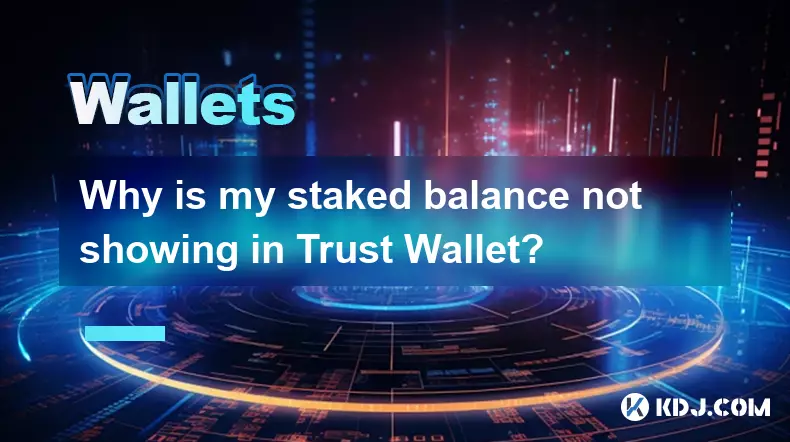
Why is my staked balance not showing in Trust Wallet?
Oct 01,2025 at 12:54am
Understanding Decentralized Exchanges in the Crypto Ecosystem1. Decentralized exchanges (DEXs) operate without a central authority, allowing users to ...
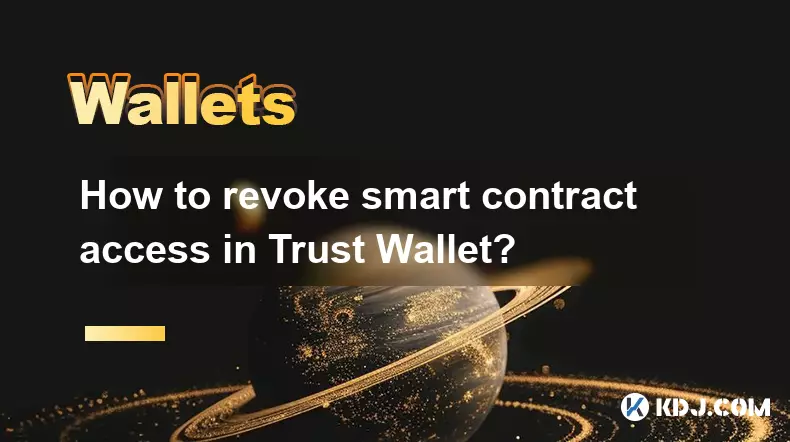
How to revoke smart contract access in Trust Wallet?
Oct 01,2025 at 12:54pm
Understanding Smart Contract Access in Trust Wallet1. Smart contracts are self-executing agreements built on blockchain networks, commonly used in dec...
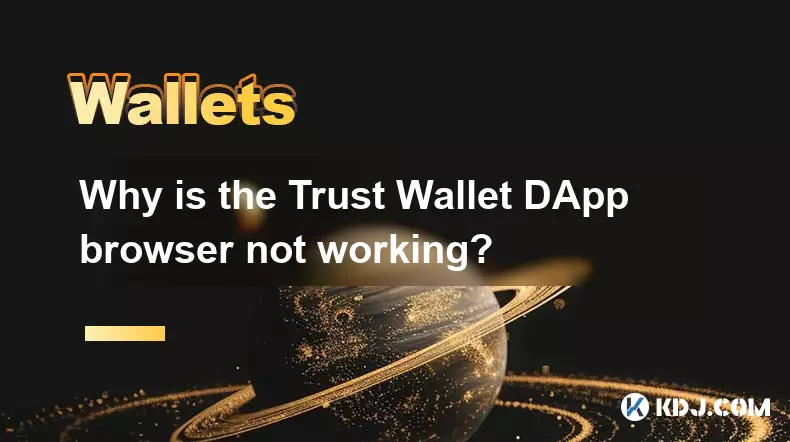
Why is the Trust Wallet DApp browser not working?
Oct 01,2025 at 05:36am
Common Causes of Trust Wallet DApp Browser Issues1. The DApp browser within Trust Wallet may fail to load due to connectivity problems. A weak or unst...
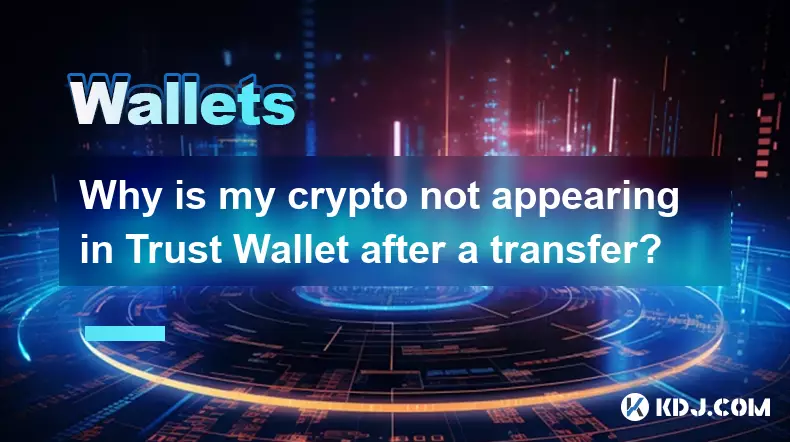
Why is my crypto not appearing in Trust Wallet after a transfer?
Oct 01,2025 at 04:36am
Common Reasons Your Crypto Doesn’t Appear in Trust Wallet1. The transaction is still pending on the blockchain. Blockchain confirmations can take time...
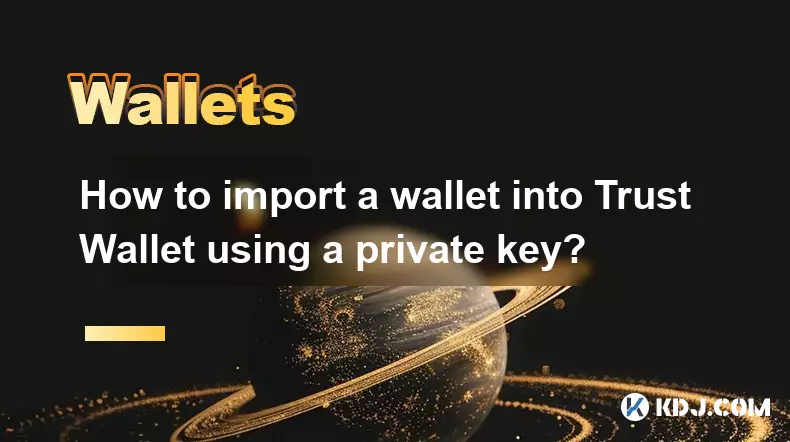
How to import a wallet into Trust Wallet using a private key?
Oct 01,2025 at 09:54am
Understanding Wallet Import via Private Key in Trust Wallet1. Trust Wallet allows users to import existing cryptocurrency wallets using a private key,...

How to get the Trust Wallet browser extension?
Oct 01,2025 at 12:37am
How to Access the Trust Wallet Browser Extension1. Visit the official Trust Wallet website through a secure internet connection. Navigate to the downl...

Why is my staked balance not showing in Trust Wallet?
Oct 01,2025 at 12:54am
Understanding Decentralized Exchanges in the Crypto Ecosystem1. Decentralized exchanges (DEXs) operate without a central authority, allowing users to ...

How to revoke smart contract access in Trust Wallet?
Oct 01,2025 at 12:54pm
Understanding Smart Contract Access in Trust Wallet1. Smart contracts are self-executing agreements built on blockchain networks, commonly used in dec...

Why is the Trust Wallet DApp browser not working?
Oct 01,2025 at 05:36am
Common Causes of Trust Wallet DApp Browser Issues1. The DApp browser within Trust Wallet may fail to load due to connectivity problems. A weak or unst...

Why is my crypto not appearing in Trust Wallet after a transfer?
Oct 01,2025 at 04:36am
Common Reasons Your Crypto Doesn’t Appear in Trust Wallet1. The transaction is still pending on the blockchain. Blockchain confirmations can take time...

How to import a wallet into Trust Wallet using a private key?
Oct 01,2025 at 09:54am
Understanding Wallet Import via Private Key in Trust Wallet1. Trust Wallet allows users to import existing cryptocurrency wallets using a private key,...
See all articles










































































